Many owners of private houses believe that there is nothing complicated in watering the grass. However, failure to comply with the basic rules is fraught with the fact that the lawn will not look aesthetically pleasing. So, what is the best time to water grass seed?
Best time to water grass seeds

Particular attention should be paid to the time of day when it comes to watering grass seed. To avoid evaporation of water, try to carry out the procedure in the morning. Make sure that the sun is not yet active, and that there are no strong gusts of wind.
A feature of the morning watering of new grass seeds is to minimize the loss of soil moisture due to water evaporation. The soil will absorb water and nourish the seeds.
If it is not possible to water new grass seed in the morning because some may not be able to do this due to their work schedule, it is better to carry out the procedure in the evening. The optimal time is 18:00-20:00. This should not be done at night because moisture may not be absorbed, and in the morning it will begin to evaporate.

Why should you water in the morning?
You need to water the lawn from 6 to 10 in the morning. There is no wind at this time, so the spray will be calm. The temperature is not too high, which prevents the evaporation of moisture. Seeds will be in an optimal microclimate, even if the day is hot. This will eliminate heat stress and germination will be many times better.
This will save water. If you water grass seed at noon, the condensate from the water will change. Because of this, watering new grass seed will be required for a longer time, which will negatively affect water consumption.
Why can’t grass seeds be watered at night?
Some owners of private houses tend to water their lawn grass at night. This is not the best idea. If during the day the evaporation of water is high, then at night it is zero. It has a much worse effect on plant development.
Water will linger in the soil for a very long time. This will cause the development of fungal diseases. Because of this, the lawn will become stained and lose its attractiveness.
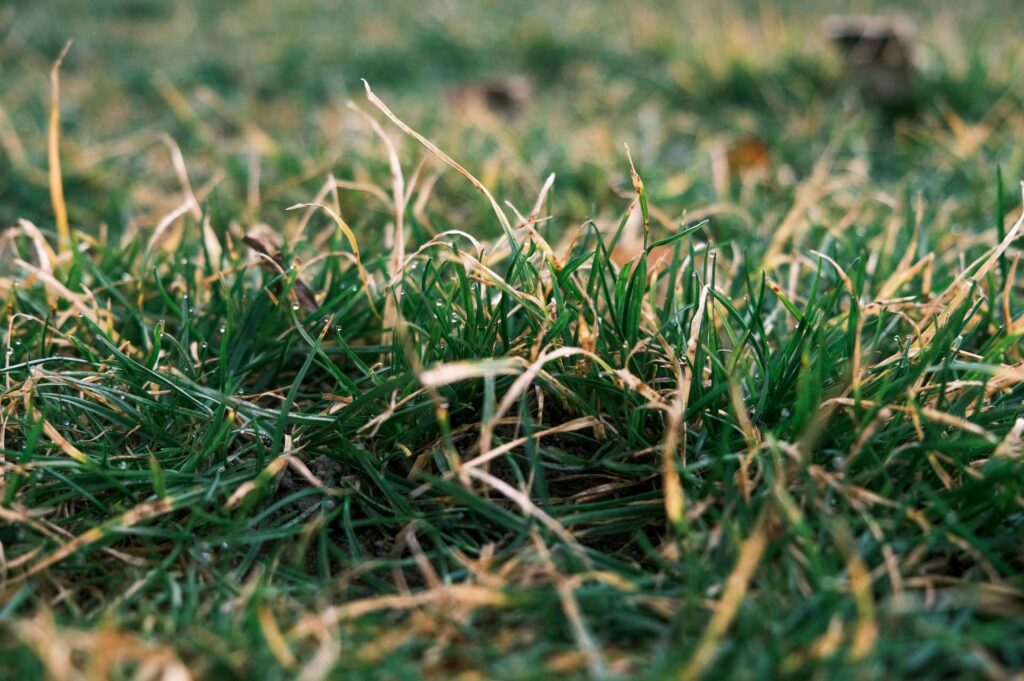
Optimal sowing time for grass seeds
It is very important to determine the optimal time for sowing before starting work with grass seeds. When choosing, you should take into account the type of grass to be planted, as well as the climate of the region. There are several main types of herbs, including:
- Cool season grasses. Cool season grasses are recommended to be sown in regions with temperate and northern climates;
- Warm season grasses. Warm season grasses grow better in the southern regions.
The possibility of sowing cool season grasses in warm places is not excluded, and vice versa. However, this does not guarantee excellent results.
Among the most common cool season grasses are:
- Kentucky Bluegrass;
- Perennial ryegrass;
- Reed and Fine Fescue.
Cool season grasses are recommended to be planted in early autumn. The weather is often moderate at this time. New grass seed should be carried out in warm soil so that the seeds germinate better. You can start sowing in the spring, as there will be a moderate temperature and a lot of rainfall.
Of the minuses of spring sowing, it should be noted that the new grass seed will compete with weeds. Therefore, you should purchase a starter fertilizer in advance, which contains an inhibitor for weed crops. You need to fertilize the lawn. However, if possible, it is better to do the work with grass seedlings in the fall.
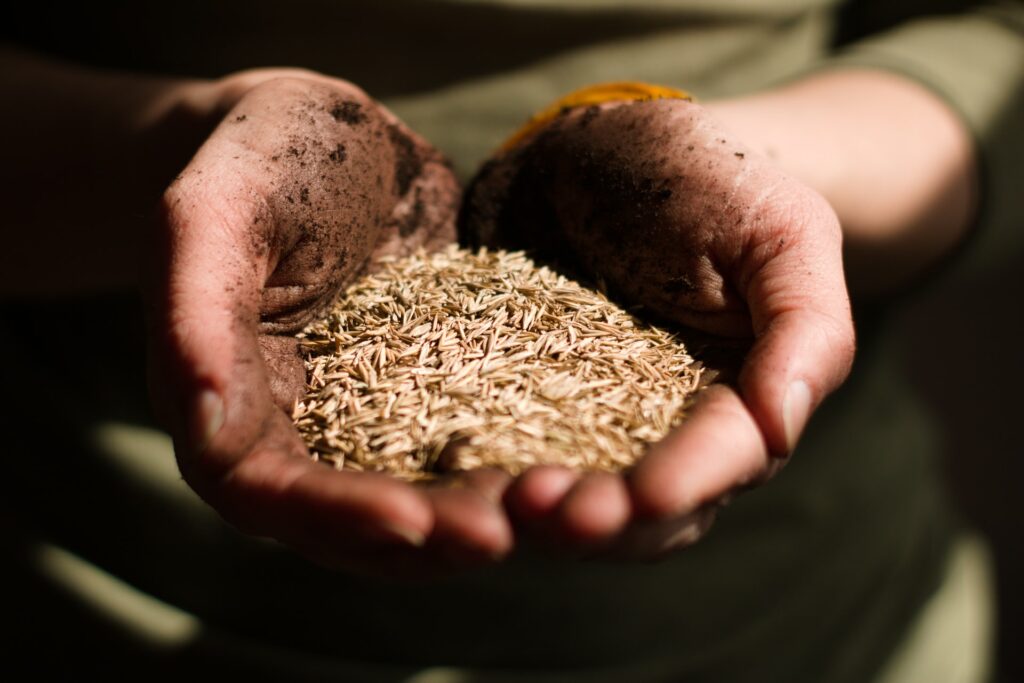
Among the common warm season grasses are:
- St. Augustine Grass;
- Bermuda grass;
- Centipede;
- Buffalo grass;
- Bahia grass.
As the name suggests, these grass seedlings prefer warm weather. Therefore, it is recommended to start sowing in late spring or early summer. The weather should be warm, not hot. Thanks to this, the best rooting of plants in the first year of life will occur.
Landing technology
Sowing grass seeds is a fairly simple task, however, many people make various mistakes. To avoid mistakes, it is better to stick to a certain technology. More about it will be discussed later. You can also read about the arrangement and ennoblement of your home and yard.
Soil preparation
For grass seed, you need to create good conditions. Therefore, the soil is prepared in advance. First, debris is removed from the site with a rake. So, the seeds will have better contact with the soil.
If nothing has previously grown on the site, use a steel rake to loosen the top layers of the soil. After spreading the seeds, it will be easier to distribute them evenly.
Next, test the soil. If necessary, apply starter fertilizer. Water the area 6-8 inches deep 2-3 days before sowing new grass seeds. Thanks to this, the new grass seeds will be moistened and germinate well.
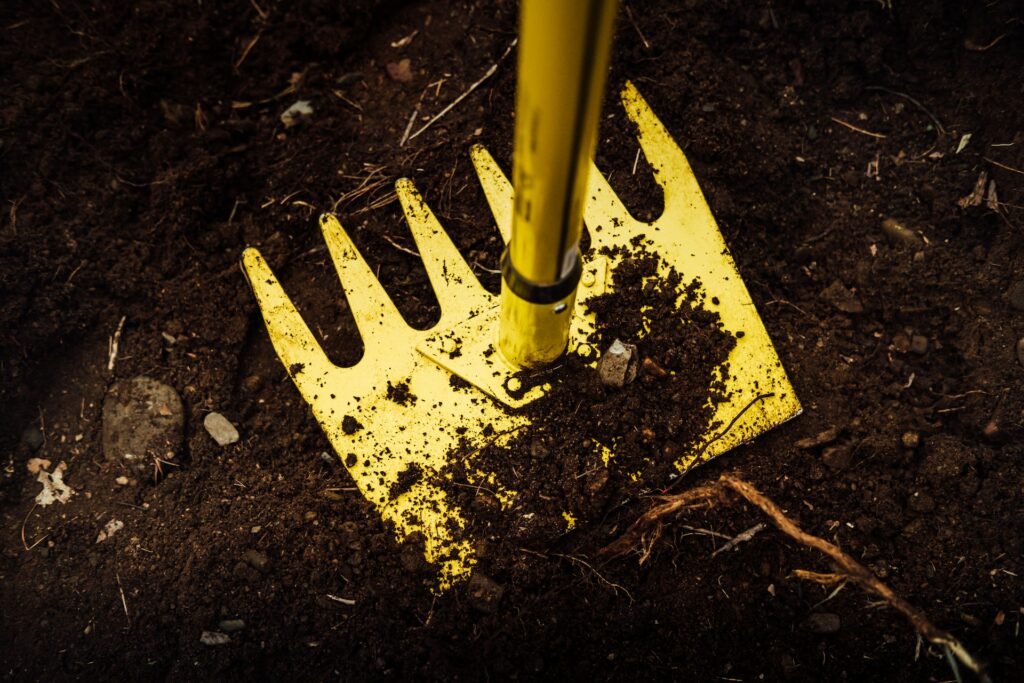
Seed spreading and coating
Once the soil has been prepared, the grass seed can be spread using a rotary or drop spreader. This will achieve an even distribution.
Daily watering
How often should grass seed be watered until it germinates? You need to irrigate the grass seed 2-3 times a day. Make sure the soil does not dry out completely. The healthy lawn should not be heavily flooded, as this can cause the seeds to be washed out and the development of diseases.
How often should grass seeds be watered until they germinate?
The frequency of watering new grass seed is determined not only by the time of work, but also by the preparations that will fertilize the soil. As soon as the new grass seed is planted, water the area for 5-10 minutes.
The top layers of the soil should be well moistened. After that, it is required to maintain this humidity further. Do not pour too much water as this may wash away the new grass seed.
When determining the frequency of watering, consider both the climate you live in and the quality of the mulch that will retain moisture.
If it rains infrequently in the region, you need to water the lawn twice a day. Only in this way will moisture be achieved in the upper layers of the soil. Water should penetrate no more than 1-2 inches within 7 days.
This condition is met until the grass seed germinates. Check the moisture content of the soil with your hands. If required, add more water.
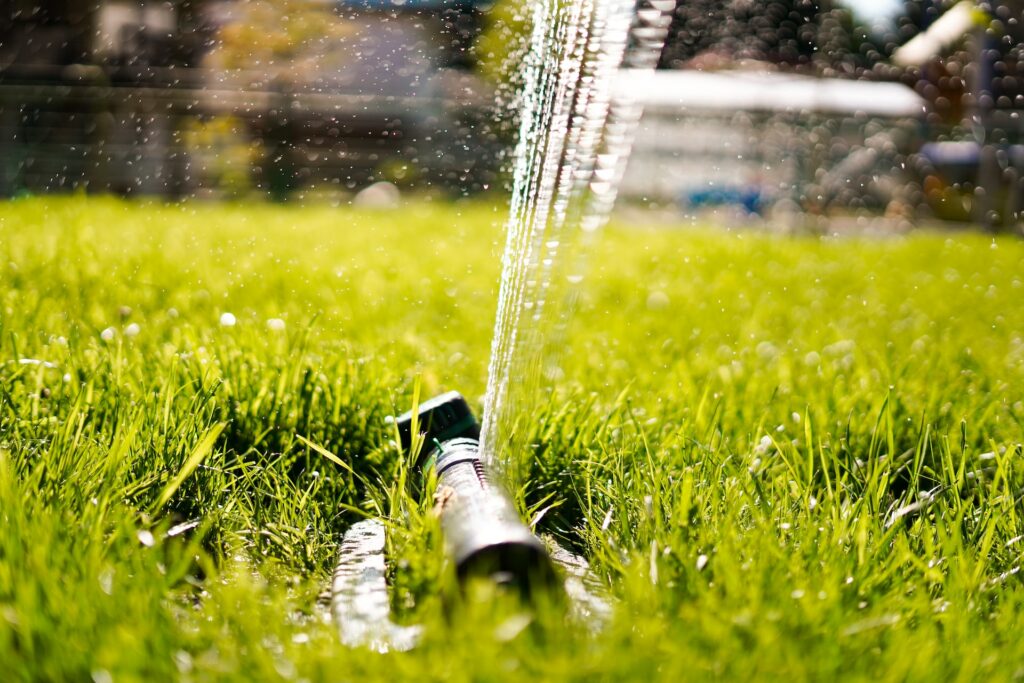
The need to use a timer for sprinklers
Many people wonder, how long should you water grass seed every day? Often a sprinkler system is used, which consists in using a timer. This allows you not to be distracted from your usual life because the system will work for you.
If you need to water new grass seed on a large area of the site, you should buy an oscillating sprinkler with 3-5 sprinklers. They are placed around the perimeter to achieve better coverage. If the area is small, one point sprinkler is sufficient. So, the entire area will be watered evenly.
Grass germination and the emergence of shoots are carried out within 7-28 days. Dates may vary depending on weather conditions and the type of grass planted.
Efficient watering of seedlings
As already mentioned, watering is best done in the morning. The optimal period is from 6 to 10 am. Daily watering for 40 minutes is recommended.
When the grass reaches 2-3 inches in height, there is no need to water it constantly. It is better to reduce the interval to 2-3 days, based on the climate. The soil should not be dry or waterlogged. In the second case, there is a risk of disease.
Frequent watering will not allow the roots to deepen. Watering infrequently and deeply will allow the grass to develop a good root system for finding water. Thanks to this, the lawn will be beautiful even in hot weather. If the grass is 3.5 inches tall or more, the watering depth should be 4 cm. It takes some moisture to develop good roots.
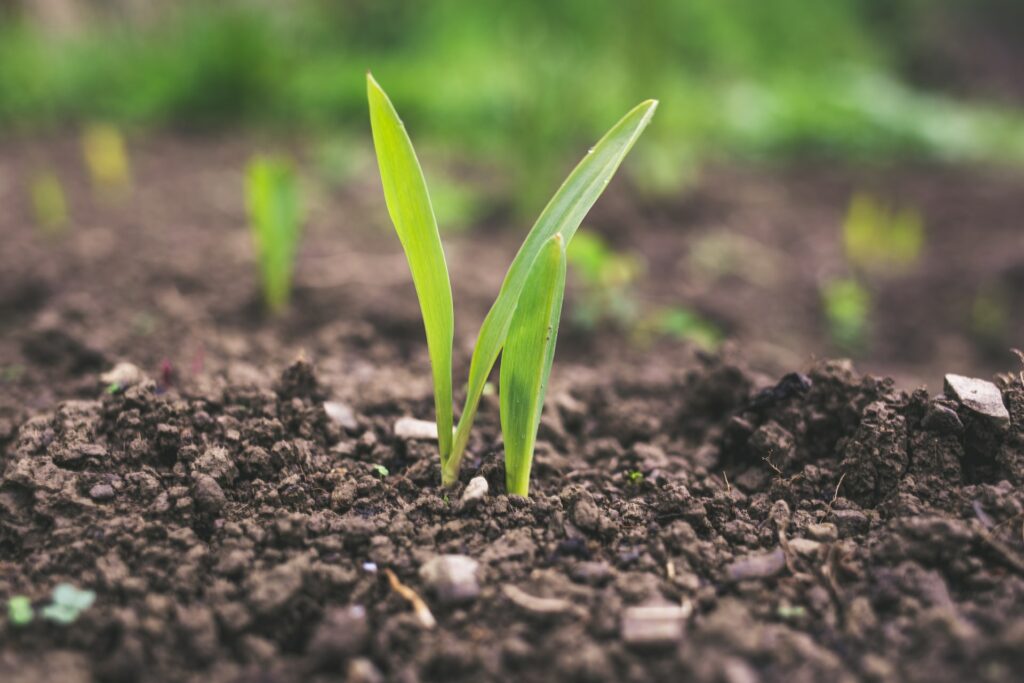
It is important to check the weather information every day. If rain is expected that day, it is better to postpone watering or make light watering. After all, waterlogging of the site, as already mentioned, negatively affects the quality of the lawn.
Mulching new seeds
The technology of mulching is that the grass seed is covered with straw, compost, or film. It is necessary to carry out work after sowing grass seed. This will prevent evaporation of moisture, washing out of the seeds, as well as their eating by birds. In this case, the procedure will strengthen the soil, and prevent the emergence of weeds.
If you use a straw, remove weeds from it. Laying is carried out in light layers. If compost is used, it is best to lay it in a ½-inch layer.
Stimulation of deep root growth
It is important to stimulate the growth of the root system. Once the grass has grown 3.5 inches, it can be cut. All pruning must be removed, and then proceed to water. It needs to be done twice a week. The depth of wetting should be 4.5 inches.
As already mentioned, sparse and deep watering will encourage root growth. If the roots are not deep, the lawn will be affected by weeds and pests.
Watering time for cold season grasses versus warm season grasses
Regardless of the type of grass, watering should be carried out at 6-10 in the morning. It should be noted that high fescue, which is included in the cold season grass category, needs a lot of water.
If you think about how long you need to water grass seed of high fescue grass, then the duration can be up to 15-20 minutes.
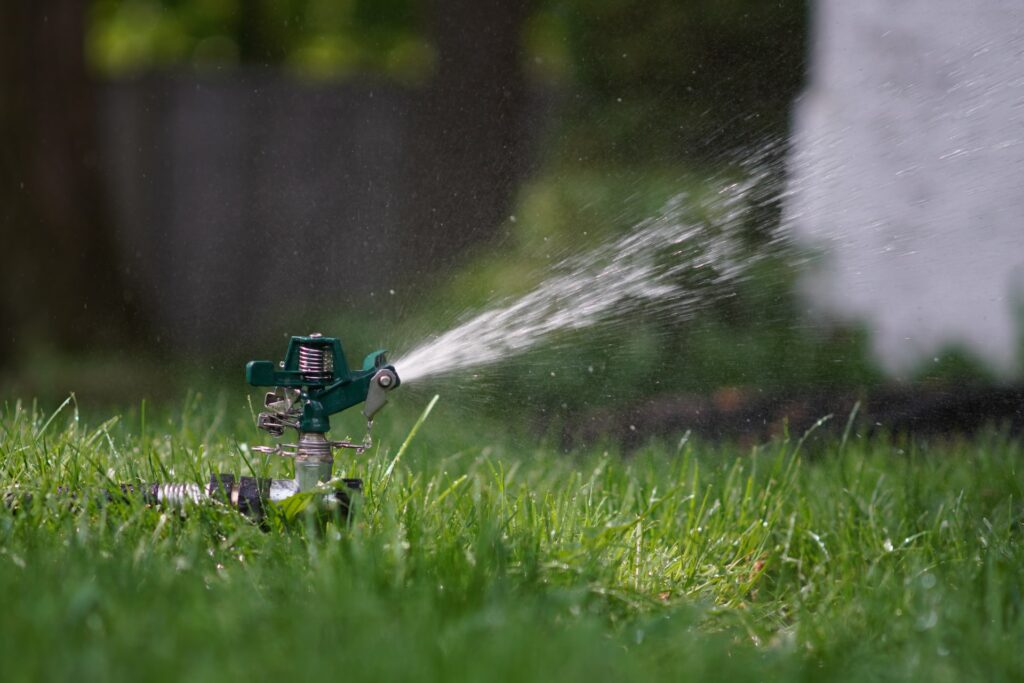
Kentucky bluegrass, which is also a cool season grass, should be watered 1.5 to 2 inches per week. You must water new grass seed like Bermuda grass, which is meant for the warm season, with no more than 1.5 inches of water per week.
Irrigation Quality Check
Even if all the conditions discussed earlier are met, this does not guarantee the quality of irrigation. That is why regular checks are required.
There are several ways to check the quality: using sensors or tests. Everything will be discussed in more detail below.
Verification
Place 8 empty tin cans throughout the lawn area. Put some near the sprinkler and others a few feet away.
Start watering, and turn it off after 15 minutes. Then measure the layer of water in each jar. Then look at the table with the optimal parameters. And determine the optimal watering time.
Watering schedules may change depending on the weather. Therefore, in case of drought, you need to water the lawn more often and longer.
Using a long screw
It is equally easy to check with a long screw. Stick it into the soil to a depth of 6-8 inches. If there is no resistance during driving, then watering is carried out correctly.
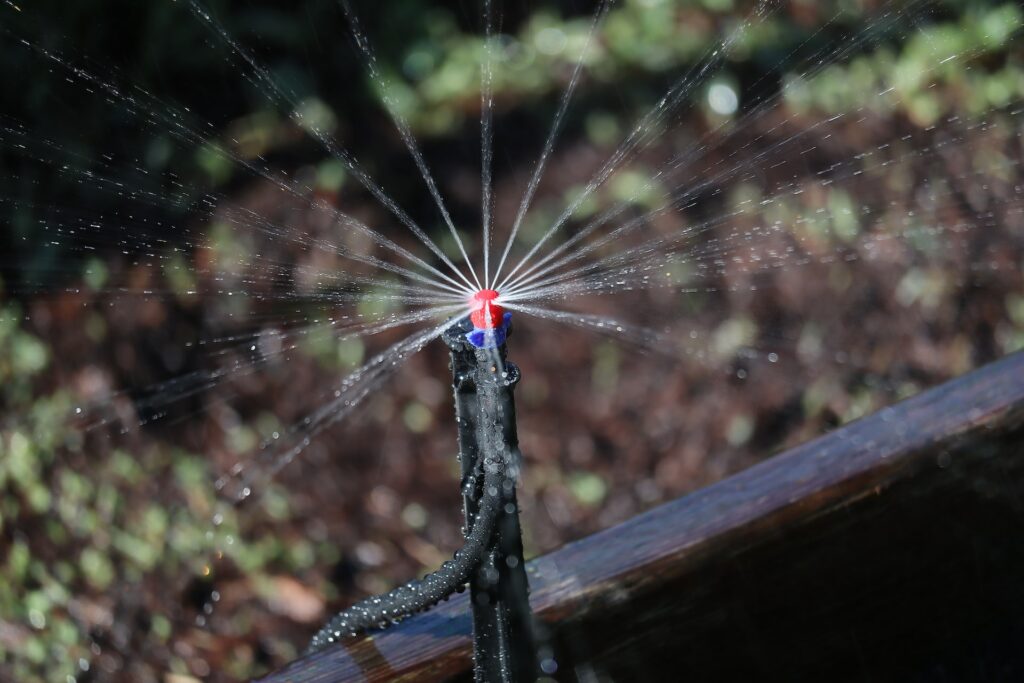
Rain sensor installation
In case of rain, watering will not be carried out according to the usual schedule. After all, the sprinkler system is not capable of determining the number of precipitation between irrigation sessions. If you install a special rain sensor, the watering grass seed will not start automatically.
For the sensor to work correctly, it must be installed in the correct location. There should be no obstacles for him.
Is it possible to sow seeds and water them in winter?
After the snow falls and melts, the temperature will rise. The lawn will be dark and uneven. Therefore, you can sow empty places with grass seed so that in spring the site is beautiful and uniform.
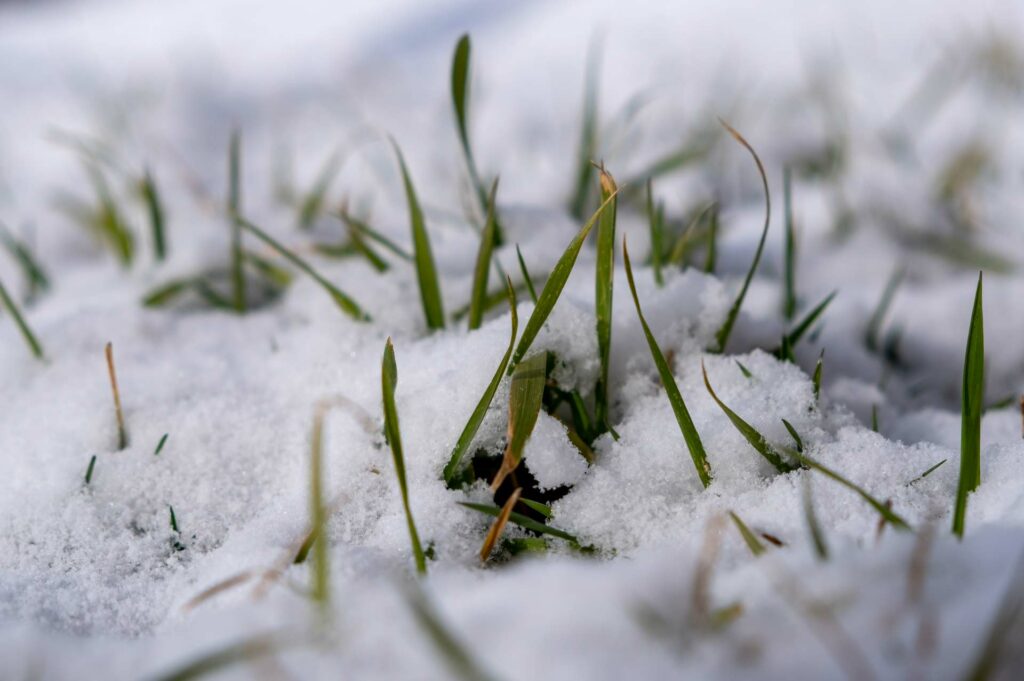
Seeds will merge with the ground, which stimulates their germination. The lawn should not be watered in winter. After all, snowdrifts and rain will provide the optimal amount of moisture in the soil.
What to choose: manual watering or sprinkler system
Lawn grass seeds constantly need enough moisture. Every morning and evening you need to carry out a 10-minute watering. This is done until the grass seed gets stronger.
You can water the lawn manually or with the help of sprinkler systems. The choice depends on many factors. Everything will be discussed in more detail below.
Manual watering
Quite often, owners of private houses with a lawn use the method of manual watering. It is enough to take a hose and water the new grass seeds. There is nothing difficult in this. However, the grass seed may die from such work.
It is not enough to lightly sprinkle the grass, or wait until it rains. Watering must be carried out again and again. However, not everyone can boast of enough free time for such work. The manual watering technique requires certain skills and attention. Only by trial and error can harmony with the lawn be achieved, and the optimal technique can be selected.

Sprinkler system
Most often, sprinkler systems are installed on the plots, which help to grow the lawn. They are comfortable and practical. Irrigation can be carried out in different ways. You can install a sprinkler at the end of the hose, or you can install oscillating sprinklers.
Hand sprinklers or smart irrigation systems that clean themselves work well. If this is your first time seeding a lawn, and you have set aside a small area for this, it is better to install smart irrigation systems.
They guarantee efficient and fast watering. It should be noted that such systems are expensive. You can also read how to plant grass seed on hard dirt.

Choice of water: hard or soft
Not every person thinks about what water to choose for irrigation. Often, attention is paid only to the irrigation system, as well as time. However, the use of hard or soft water is of great importance.
In soft water, compared to hard water, a small number of mineral components. Often, special devices are used to obtain it – softeners. Based on the fact that there are many mineral components in hard water, it can be dangerous for lawn grass, as well as for the home.
Soft water provokes the accumulation of salt in the upper layers of the soil. Therefore, new lawn grass seeds will grow worse.
If you have only hard water in your area, install a special softener. It also requires paying attention to fertilizing and aerating the soil if the softness of the water has increased. Experienced farmers advise using a mixture of soft and hard water in equal amounts to level out the shortcomings.
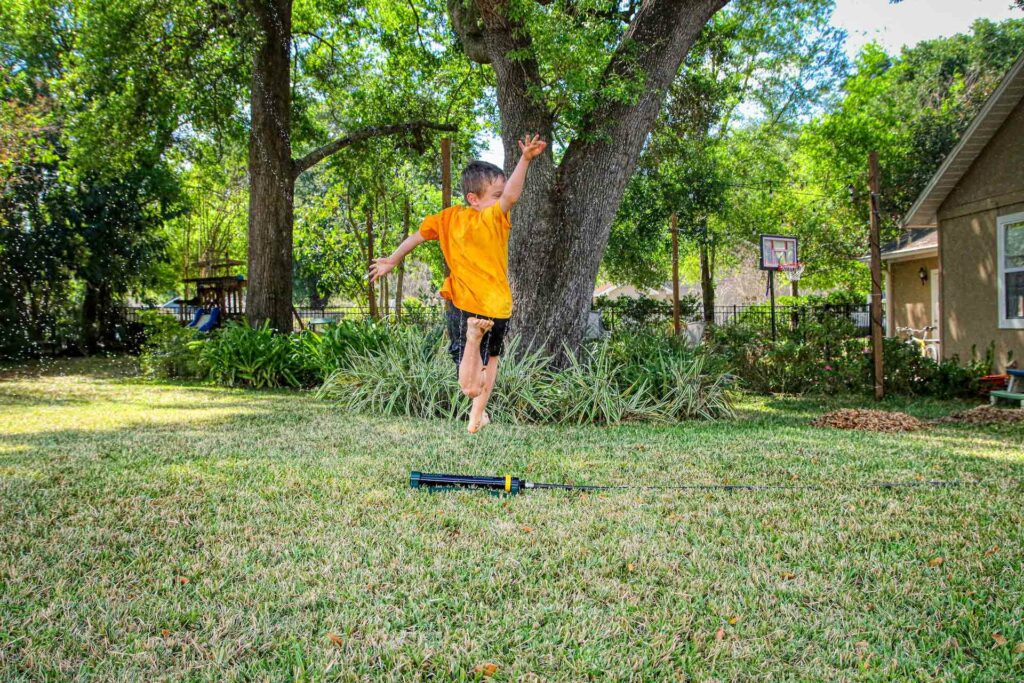
Conclusion
As you can see, it is recommended to water the grass seed of the healthy lawn in the morning, namely from 6 to 10 in the morning. It is better to water new grass seed twice a day, in the morning and the evening.
Moisturize well only the top layers, to a depth of several inches. It is important to constantly monitor soil moisture, and take into account the weather in the region.
Photo by Mohammad Rezaie on Unsplash

